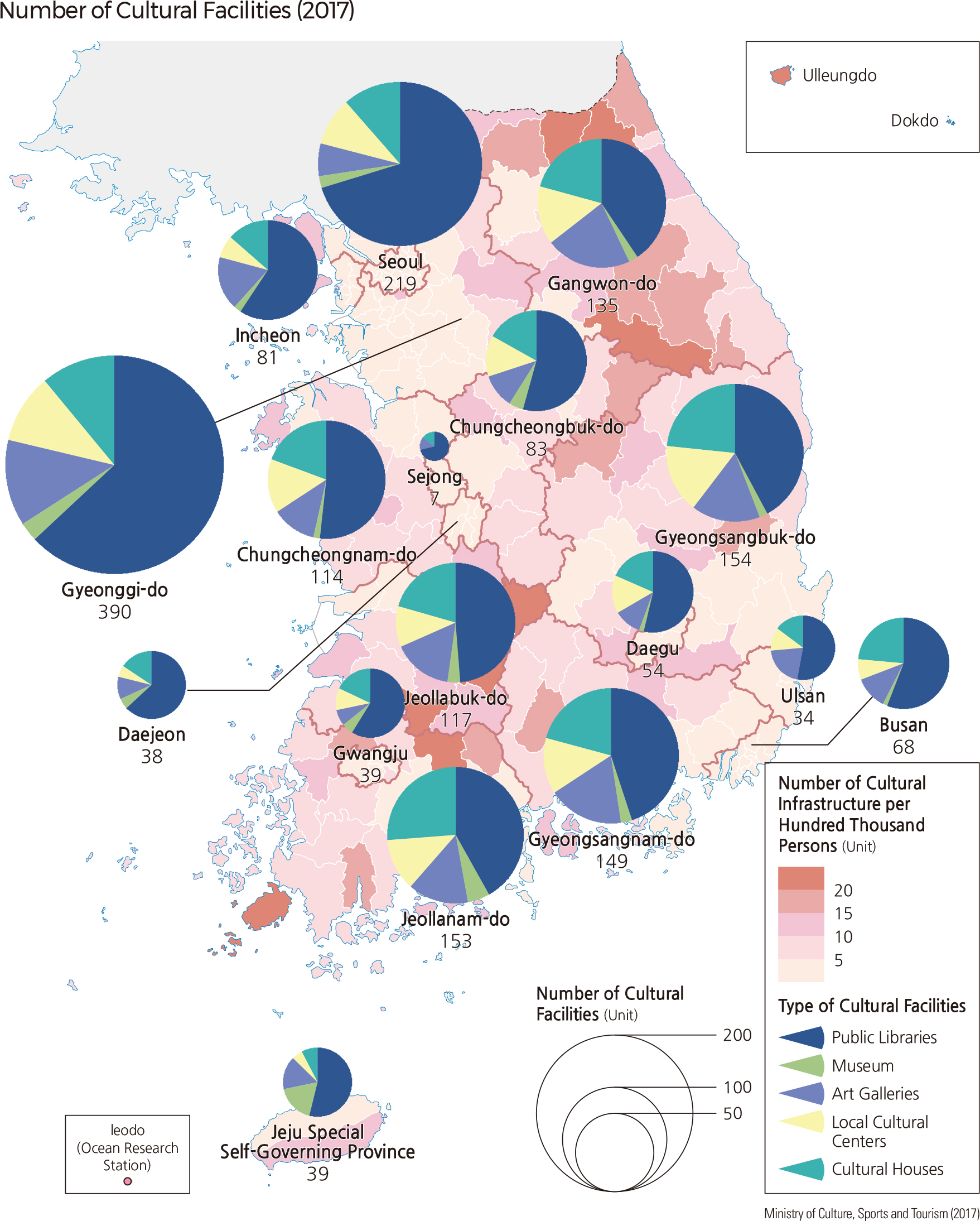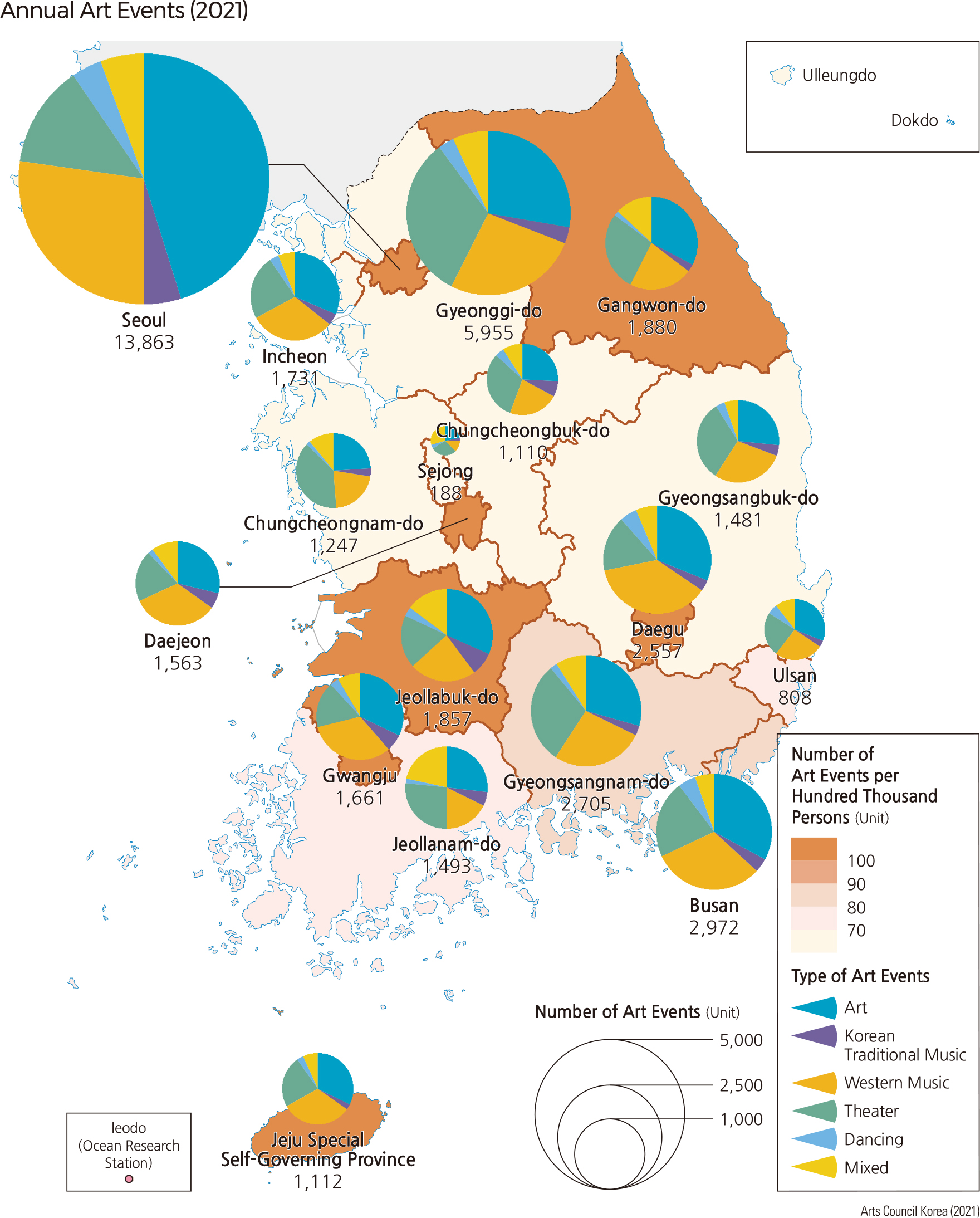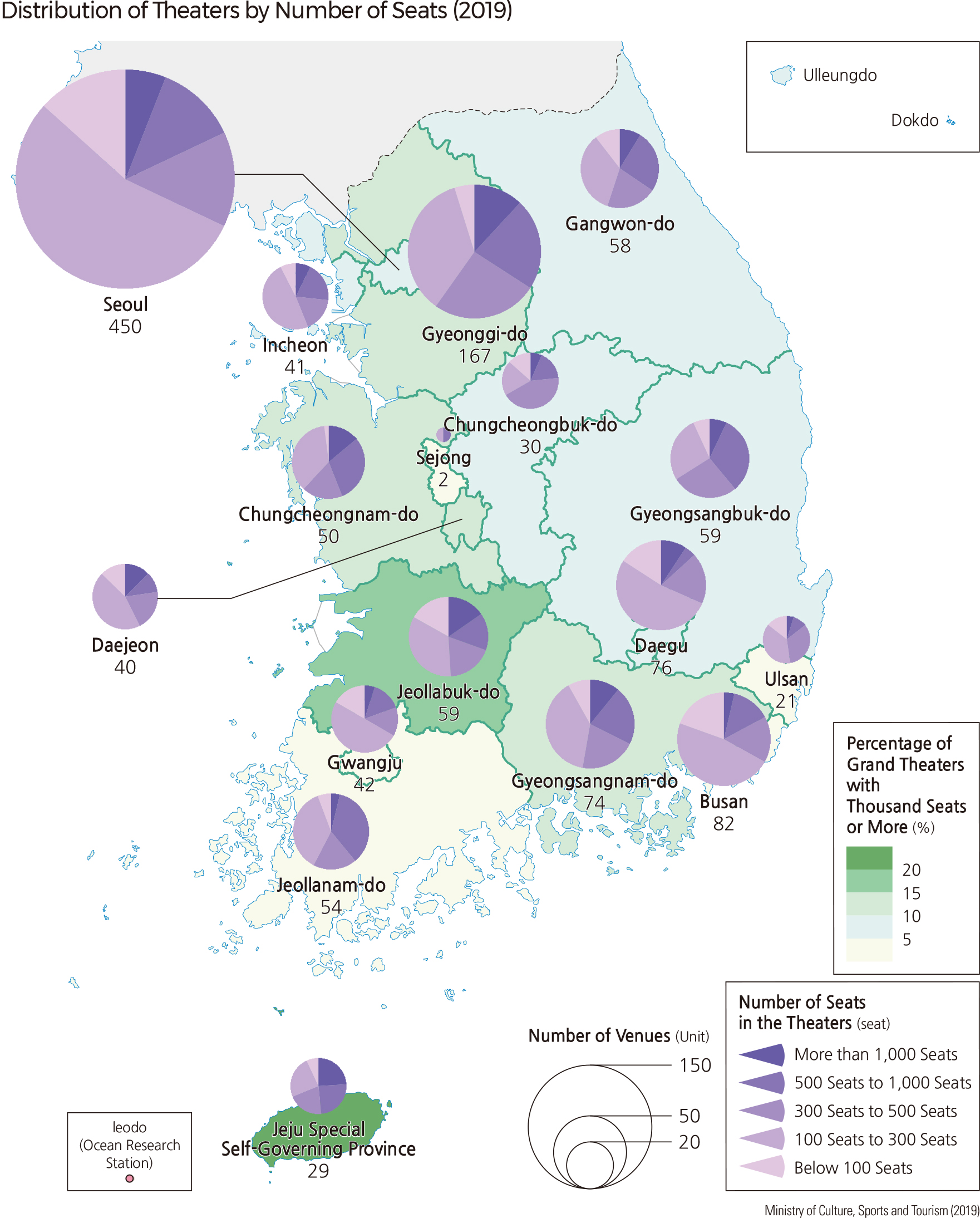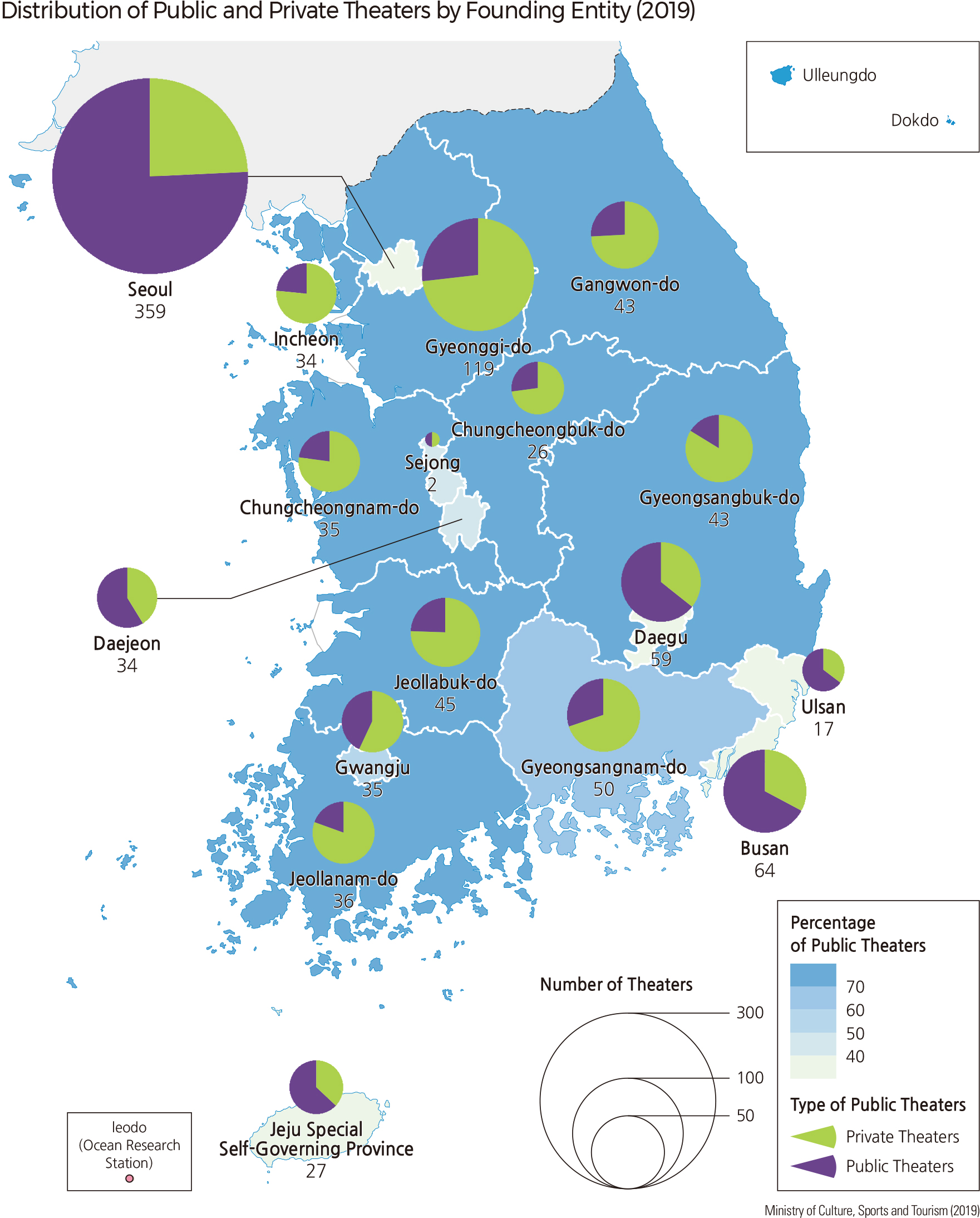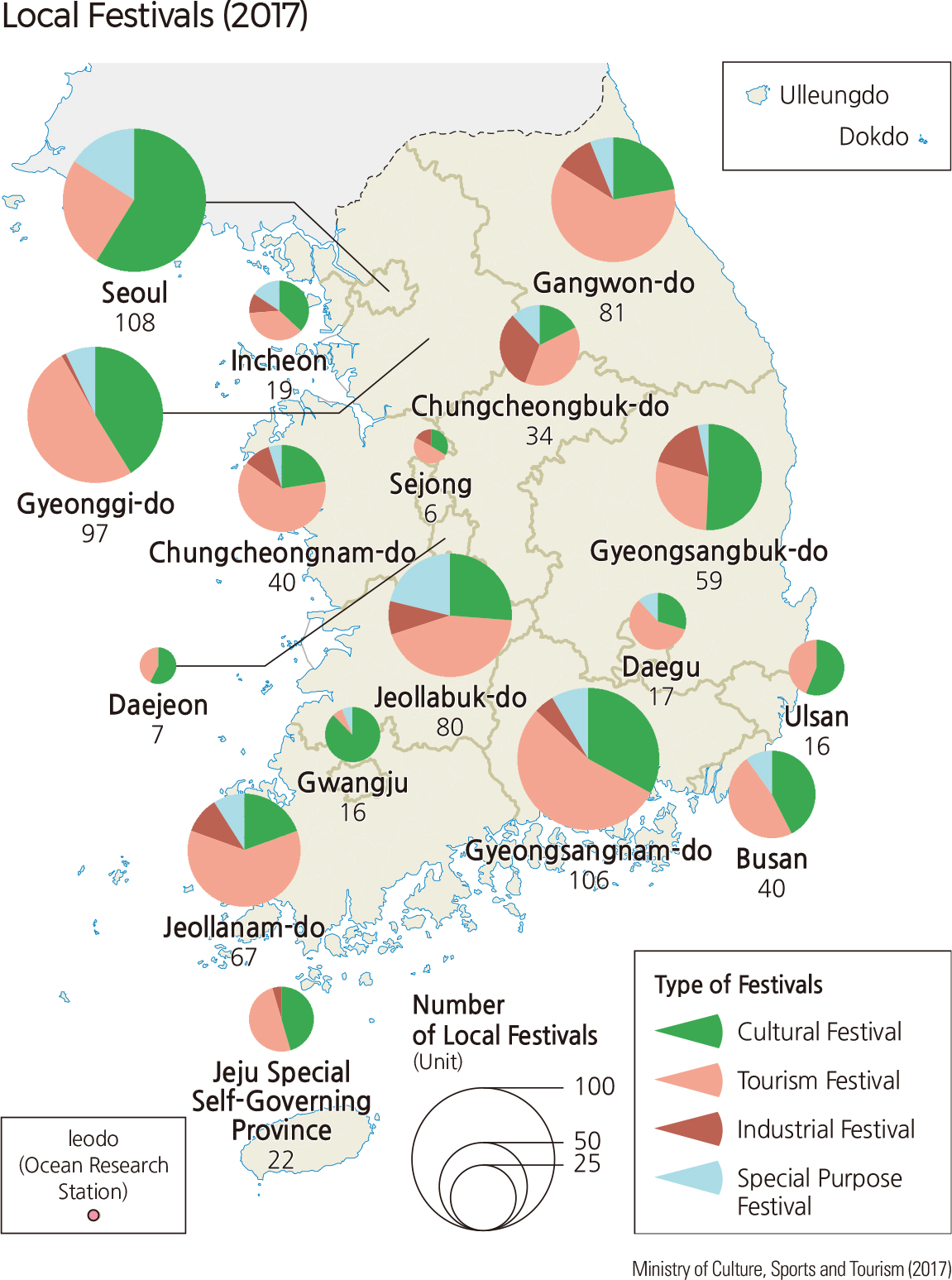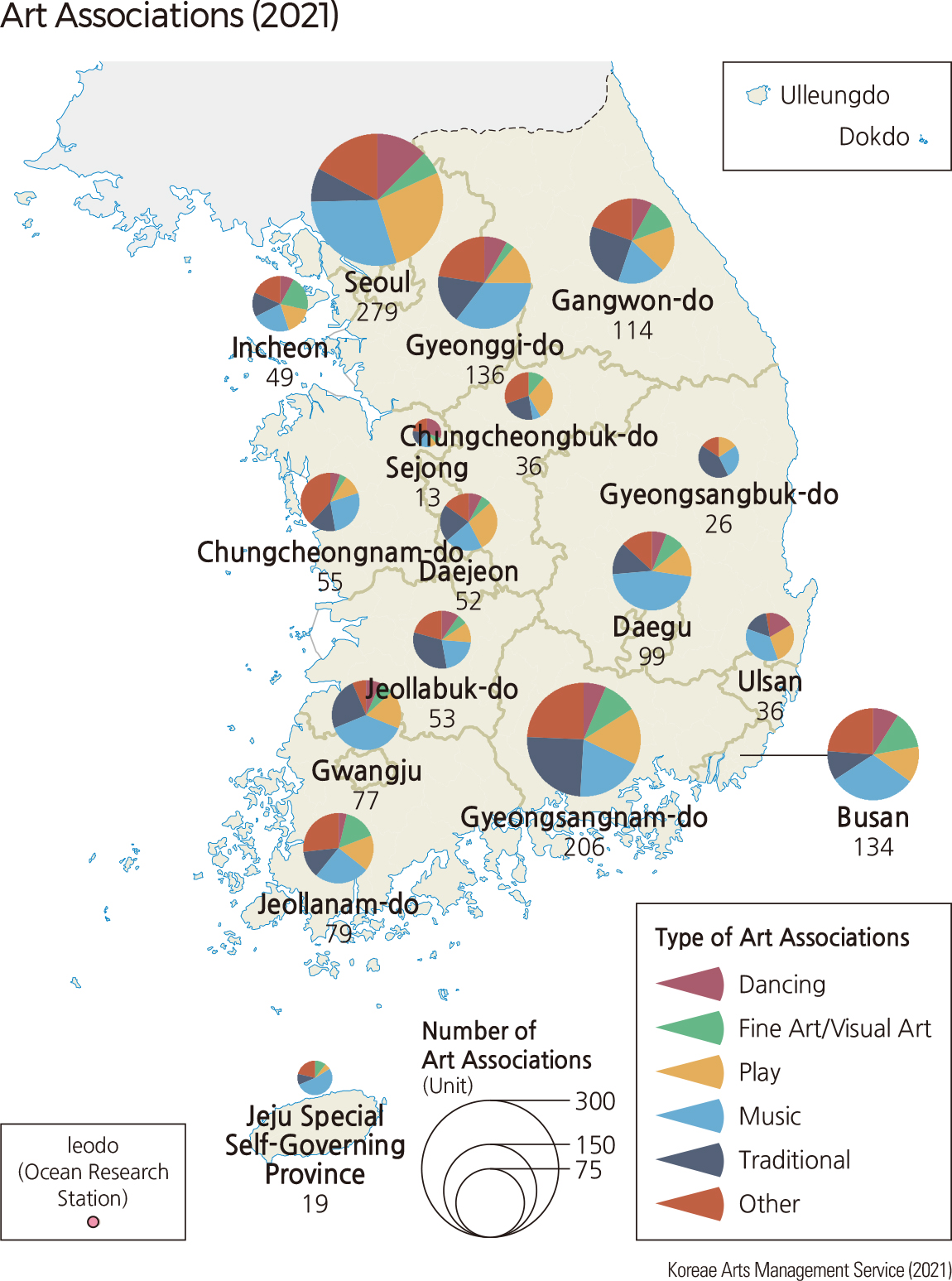English III 2021
Enjoying and participating in a variety of cultural activities are important to life in contemporary Korean society. Cultural infrastructures are the facilities run by the entities in each region to allow the local residents to enjoy cultural life more easily and conveniently. Cultural infrastructures include public libraries, museums, art galleries, cultural and art halls, local cultural centers, and cultural houses. These facilities are designed to meet the basic cultural demands of the local population; such facilities have been the foundation of local cultural activities. In addition, the cultural infrastructure carries significant meaning in terms of the cultural rights of people. Facilities such as museums, theaters, art galleries, and libraries have been steadily increasing in number and enhancing and expanding in size and diversity. Also, based on cooperation with local communities, various programs are operated regionally. In the case of museums and libraries, collections and exhibitions have been expanded. Theaters and art galleries where various art events are held, such as painting, music, theater, and dancing, are distributed across the country. In museums and art galleries, visitors can enjoy historical relics and works of art, and docent tour guide services and various educational programs are also offered. Cultural centers across the country enable people to enjoy art performances, participate in art-related activities, and discover and cultivate the local cultures. Such cultural events are concentrated more in Seoul and the metropolitan areas. However, many exhibitions and performances are being held in the rest of the country to fulfill the cultural demand. Public libraries are also preferred cultural spaces for many people. Libraries recently have been transformed into complex cultural venues for local community education, performances, and cultural events while maintaining their traditional role for studying and book lending. They play significant roles as the center of cultural activities in each local community. While theaters provide space for artists to perform and for citizens to enjoy culture, art organizations play an important role for artists, in performing art such as dancers, musicians, and in visual art such as painters, to conduct artistic activities in a stable environment and to secure their rights and interests. About 30% of art organizations are registered in Seoul and Gyeonggi-do, and about 25% of them are located in Busan, Ulsan, and Gyeongsangnam-do—art organizations are concentrated in the Seoul Metropolitan Area and the southeastern metropolitan area. Large theme parks with more than 500,000 annual visitors fulfill the demands for leisure of the region and function as an important leisure space for domestic visitors from other regions as well as international tourists. As of 2019, popular theme parks such as Everland and Lotte World had annual visitors exceeding 5 million people. However, the operation of these theme parks was stricken the most by the COVID-19 pandemic. Especially indoor theme parks suffered from a rapid decrease in the number of visitors due to COVID-19. Local festivals are major events that reflect the rich cultural and natural heritage of the region and discover and promote newly-developed tourism resources. Many regions have succeeded in sustaining local festivals, such as hosting traditional cultural festivals, tourism festivals, industrial festivals, and special interest festivals. In particular, many such festivals have emerged since the 1990s. Local festivals, which were designed to maintain the cultural heritage and unity of the local community, have increased in size and been combined with tourism and city marketing as a way of attracting tourists from all over the country and rejuvenating the regional economy. Every year, approximately 1,000 local festivals are held nationwide. Some festivals have become major local tourist attractions, attracting a large number of people. The festivals offer a diverse array of culture, art, nature and ecology, history, and local specialties. They have been established as an essential part of enhancing local tourism and cultural heritage by sparking the imagination about facets of the unique culture of that local place. Since 1995, the Ministry of Culture, Sports and Tourism has designated and supported cultural tourism festivals every year, including the best culture and tourism festivals, the most outstanding festivals, outstanding festivals, and promising festivals. As of 2019, the best culture and tourism festivals selected for five consecutive years are Hwacheon Sancheoneo Ice Festival, Gimje Horizon Festival, Boryeong Mud Festival, Jinju Namgang Yudeung (Lantern) Festival, and Andong Mask Dance Festival. The Ministry of Culture, Sports and Tourism supports promoting these festivals to become global festivals. |
